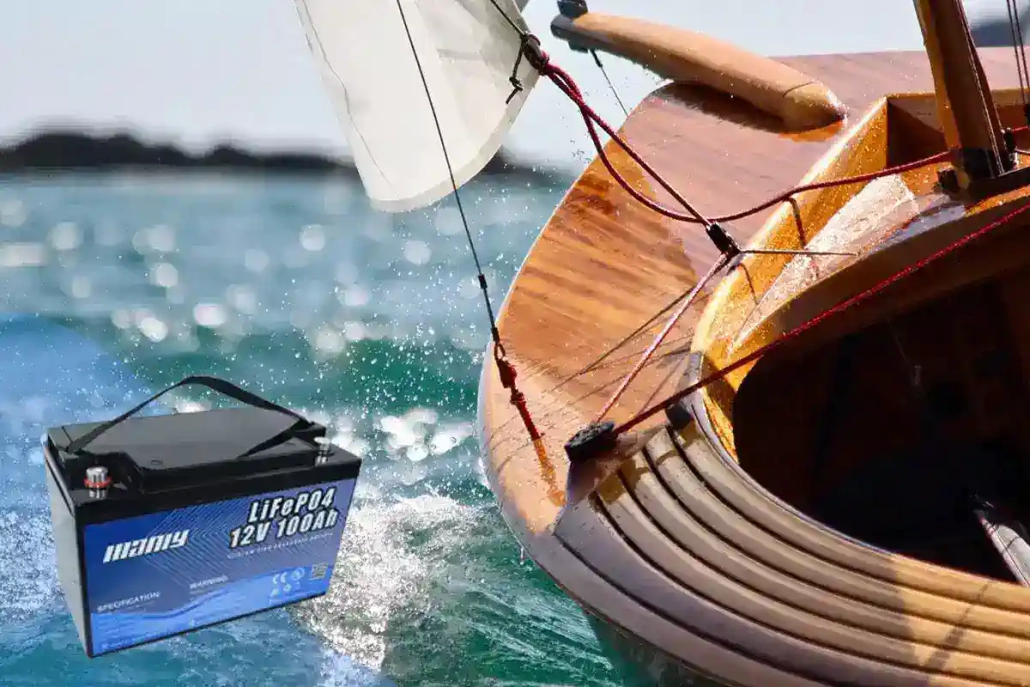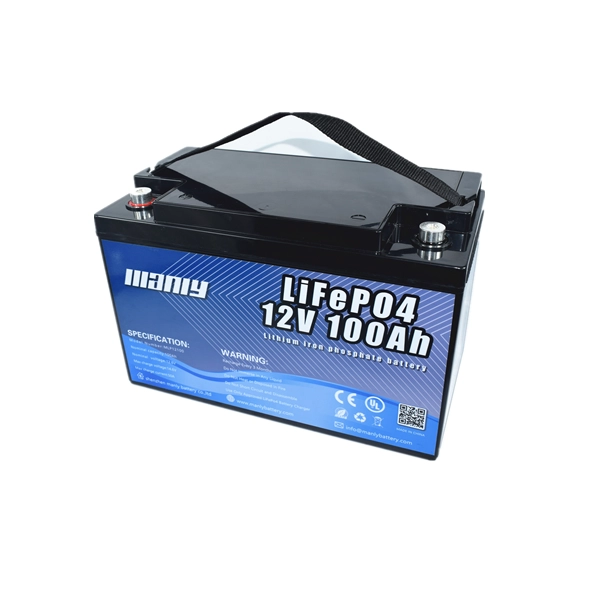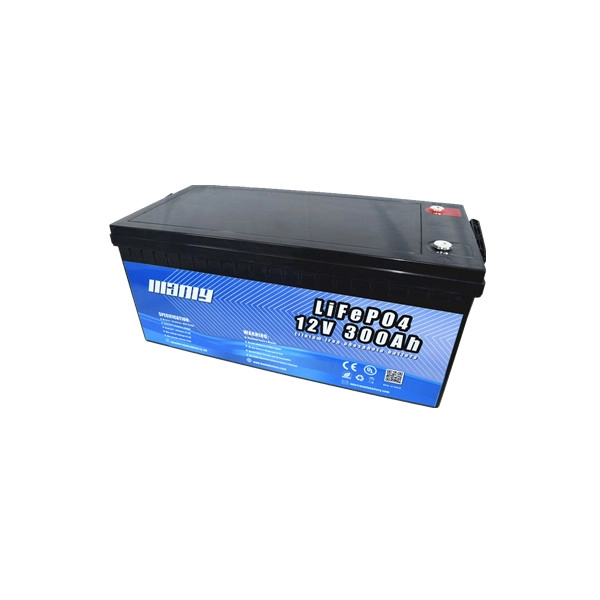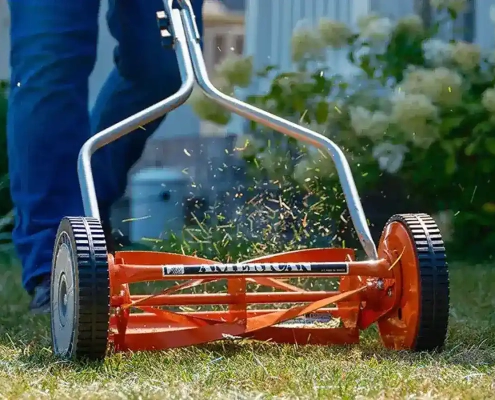2025 Marine Battery Sizes: Optimal Choices
Table of Contents
- 2025 Marine Battery Sizes: Optimal Choices
- What Are Marine Batteries?
- Navigating the Differences: Marine vs. Car Batteries
- Selecting the Right Marine Battery for Your Boating Needs
- Choosing the Perfect Marine Battery Size for Your Boat
- BCI Battery Group Sizes
- Battery Group Size Chart & Lithium Equivalent
- Understanding Marine Battery Charge: Lead-Acid vs. Lithium
- How Long Do Marine Batteries Last?
- Learn More About Battery
Navigating the vast seas of marine battery sizes can be daunting for any boat owner. Marine batteries, critical for powering boats and other watercraft, are designed to meet the unique challenges of the marine environment, setting them apart from standard automotive batteries. In this comprehensive guide, we’ll dive into marine batteries, exploring their unique design, types, and key factors to consider when selecting the right size for your vessel’s needs.
Marine Battery Size Calculator
What Are Marine Batteries?
Marine batteries play a crucial role in powering boats and various watercraft. Unlike typical automotive batteries, they are specifically engineered to handle the unique demands of marine environments. These batteries come in two main types: starter and deep-cycle, each serving a distinct purpose in your boat’s operation.
The Special Design of Marine Batteries
Marine batteries differ significantly from standard car batteries. They are crafted to endure harsh conditions like high vibrations, extreme temperatures, and potential moisture exposure common in marine settings. Their design often includes thicker, more robust plates and maintenance-free structures, reducing the risk of corrosion and fluid loss. Moreover, some advanced models, like Absorbent Glass Mat (AGM) batteries, boast sealed constructions, enhancing capacity and preventing harmful leaks.
Selecting the Right Marine Battery
Choosing a suitable marine battery is vital for your vessel’s performance and safety. Marine starter batteries are designed to deliver quick, high-energy bursts necessary for starting engines. In contrast, deep-cycle batteries provide a consistent energy flow over extended periods. Deep-cycle variants are ideal for powering gadgets like fish finders, radios, and trolling motors when the main engine is off.
Benefits of Marine Batteries
Marine batteries offer several advantages over traditional batteries, especially in their dual-function capabilities. Many marine batteries can serve as both starter and house batteries, catering to boats’ varied energy needs. Their versatility is further enhanced by the availability of different sizes to fit various watercraft.

Not all batteries are created equal when it comes to powering vehicles. This is especially true when comparing marine batteries with car batteries. Understanding these differences is crucial for ensuring the correct battery is used for the right application, whether for a boat or a car.
Robust Design of Marine Batteries
Marine batteries are uniquely constructed to meet the demands of the aquatic environment. These batteries feature thicker plates, which provide them with the resilience needed to withstand the continuous movement and vibrations typical in marine settings. This robust construction is vital as it prevents short circuits that could occur due to the jostling of rough waters.
Energy Output and Usage
Marine batteries deliver power differently from car batteries. While car batteries are designed to unleash high currents in short bursts to start the engine, marine batteries are tailored for more extended, steadier power outputs. This constant energy release is essential for maintaining various boat systems like gauges, lights, and pumps, ensuring they run smoothly over extended periods.
Vibration Resistance and Special Features
Marine batteries are not just about sturdy plates; they also boast superior vibration resistance compared to car batteries. This feature is crucial for their longevity and reliability in the fluctuating marine environment. Moreover, the terminals of marine batteries are specially designed for boat use, reflecting the specific electrical needs of marine vehicles.
Types of Marine Batteries
Marine batteries come in several varieties, each serving a distinct purpose. These include Starting batteries, Deep-Cycle batteries, Dual-Purpose batteries (which combine starting and deep-cycling functions), and Lithium Deep-Cycle batteries. Each type caters to different marine energy needs, from starting engines to powering onboard equipment.
Selecting the Right Marine Battery for Your Boating Needs
Selecting the perfect marine battery is a crucial decision for any boat owner. The correct battery powers your boat and ensures safety and reliability on the water. Understanding what to look for in a marine battery is key to making an informed choice.
Assessing Your Boat’s Power Needs
The first step in choosing a marine battery is to evaluate what you need it to do. Do you need a battery to start the boat and power a few essential items, or do you have a range of electronics and appliances that require power? The answer to this question will guide your choice.
One Battery or Two?
For smaller boats with limited power demands, a single battery might suffice to start the boat and run a few electronics. However, if you have a larger boat or one with higher power needs, it’s wise to consider two separate batteries. This approach involves using one battery to start the boat and a second deep-cycle battery to run electronics and appliances.
The Benefits of a Second Battery
Having a separate deep-cycle battery for power applications is highly recommended. This strategy reduces the risk of draining your starting battery, which could leave you stranded. A dedicated deep-cycle battery ensures that there’s always enough power to start the boat, no matter how much energy your appliances and electronics consume.
Deep Cycle Batteries: A Reliable Choice
Deep-cycle batteries are the ideal choice for those needing a battery for power applications. These batteries are designed to provide consistent energy over an extended period, making them perfect for powering a wide range of marine electronics and appliances.
Choosing the Perfect Marine Battery Size for Your Boat
Choosing the right size for your marine battery is a key decision for any boat owner. The size depends on whether the battery is for starting the engine or powering other devices (known as deep cycle use). Most boaters benefit from having two different battery systems.
Engine Starting Batteries: What to Look For
The size of a battery for starting your boat’s engine is usually determined by its Marine Cranking Amps (MCA). This measures the power a battery can release quickly at 32 degrees Fahrenheit. Ensuring your starting battery has enough MCA to start your engine reliably under various conditions.
A standard guideline for gasoline engines is one cranking amp per cubic inch of engine size. Diesel engines require more power and should have about 2 cranking amps per cubic inch. For example, a gasoline engine with 366 cubic inches should have a battery with at least 400 MCA.
Choosing Batteries for House or Auxiliary Power
Selecting the right size for house batteries is a bit more complex. These batteries power devices and appliances on your boat, so their requirements vary widely. Calculate the total watt-hours you need by multiplying the wattage of each device by how long you’ll use it between charges. Choosing a battery slightly more significant than your total watt-hour calculation is wise to ensure you have enough power.
The Advantages of Lithium Batteries
Modern lithium batteries are often recommended for superior performance over lead-acid batteries. They can handle deep discharges without damage and offer thousands more cycles of use, making them a more durable and reliable choice for both starting and deep-cycle applications.
Why Two Battery Systems Are Ideal
Having two separate systems — one for starting the engine and another for your devices — is often the best approach. This setup ensures that using power for your devices won’t drain the battery needed to start your engine.
BCI Battery Group Sizes
Introduction to BCI and Battery Group Sizes
The Battery Council International (BCI), a non-profit trade association established in the 1920s, is a key player in standardizing Battery Group Sizes. BCI’s role in supporting the lead-acid battery industry is evident in its development of technical standards, including creating specific group sizes for various battery applications. These group sizes, a result of BCI’s efforts, provide manufacturers and consumers with a clear understanding of batteries’ general dimensions and capacities, facilitating the search for suitable replacements.
Common Group Sizes in Marine Applications
Several Battery Group Sizes are particularly relevant in marine applications. These include Group 24, Group 27, Group 31, and 8D. These sizes indicate the maximum dimensions of a battery, allowing equipment manufacturers to optimize battery storage spaces. Generally, as the group size increases, so do the battery’s overall dimensions and capacity, making these larger batteries suitable for more demanding applications.
Why Group Sizes Matter
Understanding Battery Group Sizes is not just about technical knowledge but practical benefits. By adhering to these standardized sizes, manufacturers ensure that batteries are interchangeable and fit within the allocated spaces in various equipment. This standardization simplifies finding replacement batteries, especially in specialized fields like marine applications, where space and reliability are critical. So, knowing and adhering to these group sizes can save you time and effort in your daily tasks.
By keeping these group sizes in mind, you are not just ensuring that the battery you choose will fit perfectly and deliver the necessary performance for your specific application. You are also taking a proactive step towards responsible equipment selection, which is crucial for the smooth operation of your systems.
BCI Battery Group Sizes Chart
| BCI Group # | Length (in) | Width (in) | Height (in) |
| 24 | 10.25 | 6.81 | 8.88 |
| 24F | 10.75 | 6.81 | 9 |
| 24H | 10.25 | 6.81 | 9.38 |
| 24R | 10.25 | 6.81 | 9 |
| 24T | 10.25 | 6.81 | 9.75 |
| 27 | 12.06 | 6.81 | 8.88 |
| 27F | 12.5 | 6.81 | 8.94 |
| 27H | 11.75 | 6.81 | 9.25 |
| 31 | 13 | 6.72 | 9.44 |
| 8D | 20.75 | 11.13 | 9.88 |
Battery Group Size Chart & Lithium Equivalent
Marine Battery Group Size Chart
| BCI Group # | Voltage | Type | Part # | Amp Hours | Continuous (A) | Peak (A) |
| 24 | 12V | Deep Cycle | RB60 | 60 | 60 | 140 |
| 24 | 12V | Deep Cycle | RB75 | 75 | 75 | 150 |
| 24 | 24V | Deep Cycle | RB24V40 | 40 | 30 | 70 |
| 27 | 12V | Deep Cycle | RB80 | 80 | 80 | 160 |
| 31 | 12V | Deep Cycle | RB100 | 100 | 100 | 200 |
| 31 | 24V | Deep Cycle | RB24V52 | 52 | 50 | 100 |
| 31 | 12V | Dual Purpose | RB100-HP | 100 | 100 | 800 |
| 8D | 12V | Deep Cycle | RB200 | 200 | 100 | 200 |
| 8D | 12V | Deep Cycle | RB300 | 300 | 100 | 200 |
| 8D | 12V | Dual Purpose | RB300-HP | 300 | 100 | 800 |
The Best Group 24 Marine Battery
When selecting a marine battery, size matters. Group 24 batteries are popular with many boaters due to their compact dimensions and reliable performance. They are designed to fit most boats easily, making them versatile.
Dimensions and Fit of Group 24 Batteries
A Group 24 marine battery typically measures 10.2 inches in length, 6.8 inches in width, and 9.3 inches in height. This size is ideal for boating because it combines efficient space usage with adequate power capacity.
The Lightest Group 24 Marine Battery
One standout option is the MANLY 12V 60Ah lithium battery. This battery offers a dual-purpose function, providing both 1,000 Cold Cranking Amps (CCA) for engine starting and 60 Amp Hours of deep cycle power. Its major advantage is its weight – at just 16.5 pounds, it’s significantly lighter than traditional marine batteries, making it an excellent choice for applications like kayak fishing, trolling motors, and starting smaller outboard motors.
Durability and Lifespan
Besides its lightweight advantage, the MANLY 12V 60Ah lithium battery boasts a much longer lifespan – up to five times longer than traditional marine batteries. This increased durability means fewer replacements and better long-term value.

Warranty and Reliability
A crucial aspect of any marine battery is its warranty and reliability. The MANLY 12V 60Ah battery comes with a 10-year warranty, providing boaters with peace of mind and assurance of quality and durability.
Exploring Group 27 Marine Batteries for Your Boating Needs
Choosing the correct marine battery size is critical for optimal boat performance. Group 27 marine batteries stand out among the various sizes available due to their common usage and reliability. They offer a balance of size, power, and durability, making them a popular choice among boaters.
Group 27 Battery Dimensions
A typical Group 27 marine battery measures 11 inches in length, 7.3 inches in width, and 9.3 inches in height. This size makes it slightly larger than the Group 24 battery, providing more power capacity while maintaining a manageable size for most boats.
Advanced Options: Lithium Iron Phosphate Batteries
In Group 27 batteries, the MANLY 12V 100Ah lithium battery is a noteworthy option. This lithium iron phosphate battery stands out for its superior power and lightweight design. It offers twice the usable power and half the weight of a traditional Group 27 AGM or lead-acid battery.

Longevity and Durability
One of the most significant advantages of the MANLY 12V 100Ah lithium battery is its lifespan. It lasts up to five times longer than standard AGM or lead-acid batteries, providing exceptional value. This extended lifespan makes it a cost-effective and reliable choice for frequent boaters.
Warranty and Assurance
The MANLY 12V 100Ah lithium battery has a 10-year warranty, reflecting its high-quality construction and reliability. This long-term warranty offers boaters peace of mind, knowing their investment is protected.
Group 31 Marine Batteries
Group 31 sizes are gaining traction in marine batteries due to their optimal balance of size and power. They are particularly suitable for boats with multiple electronic needs and are widely used in the RV industry.
Group 31 Battery Dimensions
A Group 31 marine battery is slightly larger than a Group 27, measuring 12.8 inches in length, 6.8 inches in width, and 9.3 inches in height. This size increase allows for more power storage, making it a top choice for boats with extensive electronic systems and use as house batteries in RVs and solar power setups.
Advancements in Battery Technology: The MANLY 12V 300Ah Lithium Battery
Leading the charge in Group 31 marine batteries is the MANLY 12V 300Ah lithium battery. This battery boasts an impressive 6 times the usable power of traditional AGM batteries while maintaining the exact physical dimensions. With 300 Amp Hours of energy in a compact size, it’s a game-changer for boaters and RV enthusiasts.
Energy Density and Efficiency
The MANLY 12V 300Ah lithium battery’s high energy density means that it can replace up to six AGM or lead-acid batteries. This efficiency allows for a smaller and more compact battery bank, giving boat owners the flexibility to add power-hungry upgrades like air conditioning, electric grills, or induction stovetops without the need for bulky generators.
Dual-Purpose Functionality
The most significant advantage of the MANLY 12V 300Ah lithium battery is its dual-purpose capability. It provides 300 Ah of deep cycle performance and 1,000 CCA of engine cranking power. This versatility means that a single battery can be used to start engines and run electronics, simplifying the power system on a boat.

Group 34 and 8D Marine Batteries
Selecting the correct marine battery is crucial for the optimal performance of boats and RVs. Among various sizes, Group 34 and 8D batteries are notable for their specific applications and advantages.
Group 34 Marine Batteries: Compact Powerhouses
Group 34 marine batteries are slightly larger versions of Group 31 batteries. They measure 13.5 inches in length, 6.8 inches in width, and 9.3 inches in height. These dimensions make them ideal for boats requiring more power without significantly increasing the battery size.
The MANLY 12V 300Ah Lithium Battery
A top choice for upgrading Group 34 batteries is the MANLY 12V 300Ah lithium battery. This battery stands out for its exceptional energy density, packing the power of six Group 34 batteries into one. It offers a compact yet powerful solution for marine applications.
8D Marine Batteries: For Larger Power Needs
8D batteries are among the most significant marine batteries, measuring 20.75 inches in length, 11.13 inches in width, and 9.88 inches in height. Initially developed for large boats, commercial fishing vessels, and RVs, these batteries offer substantial power for demanding applications.
Evolution of 8D Batteries: MANLY’s Innovations
MANLY batteries have revolutionized 8D marine batteries with their lithium technology. The MANLY 12V 200Ah lithium battery, known for its popularity in RVs, sprinter vans, and boats, offers twice the usable power at half the weight of traditional AGM batteries. In 2023, MANLY launched the 12V 300Ah battery, providing four times the usable power of a lead-acid battery in a more compact case. This advancement makes the MANLY 12V 200Ah battery an ultimate upgrade choice, offering quadruple the power, a third of the weight, and five times the lifespan of traditional 8D batteries.
Dual-Purpose Functionality
The MANLY 12V 300Ah battery is not just about increased capacity; it also offers dual-purpose functionality. With 1,000 cold cranking amps, it can efficiently start engines and power a wide range of electronics.
Understanding Marine Battery Charge: Lead-Acid vs. Lithium
Proper charging is crucial for maintaining the health and longevity of marine batteries. Understanding the right way to charge different types of marine batteries can ensure optimal performance and extend their lifespan.
Charging Lead-Acid Marine Batteries
Traditional lead-acid marine batteries are commonly used and can generally be charged with a regular charger. This type of charger is readily available and usually sufficient for the needs of these batteries.
Transition to Lithium Marine Batteries
Modern marine batteries often use lithium technology. While these can also be charged with standard chargers, there are benefits to using chargers specifically designed for lithium batteries.
The Benefits of Dedicated Lithium Chargers
A dedicated lithium charger can charge the batteries faster and more effectively than a regular charger. Although this might cost additional, the faster and fuller charge can significantly improve battery performance and lifespan.
Special Considerations for Charging Lithium Batteries from an Alternator
It’s essential to use a DC-to-DC charger or a lithium alternator controller when charging lithium marine batteries from an alternator. Lithium batteries charge much quicker than lead-acid batteries, and the high power draw could potentially harm the alternator. A controller is necessary to prevent this damage and ensure the battery is charged correctly.
Protecting Your Alternator and Battery
Using a lithium alternator controller or DC to DC charger helps safeguard the alternator from damage due to lithium batteries’ rapid charge rate. It also ensures that the battery is charged, controlled, and efficiently.
How Long Do Marine Batteries Last?
Knowing how long your marine battery will last is crucial for reliable and efficient boating. The lifespan of a marine battery depends on several factors, including its type, usage frequency, and maintenance.
Types of Marine Batteries and Their Lifespan
Marine batteries are mainly of two types: traditional lead-acid and modern lithium batteries. Based on various factors, each type has a different expected lifespan.
Lead-Acid Batteries: Duration and Care
Lead-acid batteries, commonly used for starting engines, can last up to five or six years with proper care and moderate use. However, without regular maintenance, their life can be significantly shortened to just a year or two. Ensuring they are charged correctly and kept clean is key to extending their life.
Lithium Marine Batteries: Longevity and Maintenance
Lithium marine batteries offer a longer lifespan, often a decade or more. One significant advantage of lithium batteries is their low maintenance requirements. Unlike lead-acid batteries, they don’t need regular upkeep aside from avoiding physical damage.
Factors Influencing Battery Life
Several factors play a role in determining the life expectancy of marine batteries. These include:
- The number of charge cycles: How often the battery is charged and discharged.
- Usage frequency: How regularly the battery is used.
- Conditions of use and storage: The environment in which the battery is used and stored, such as temperature and humidity.
Tips for Extending Battery Life
To maximize the life of your marine battery, consider the following tips:
- Regularly check and maintain lead-acid batteries.
- Store batteries in a cool, dry place to avoid extreme temperatures.
- Ensure proper charging techniques are used.





